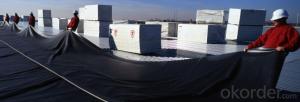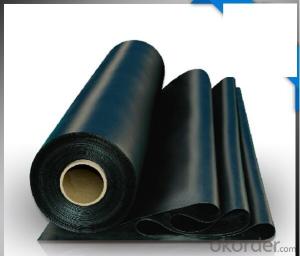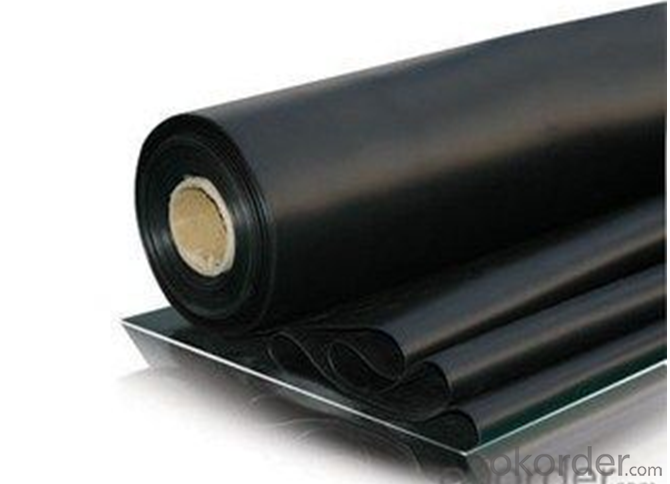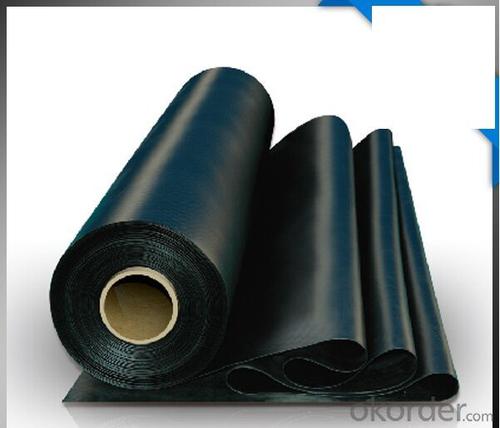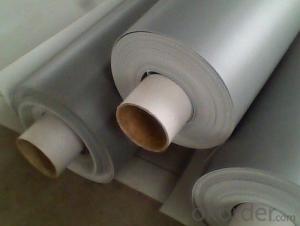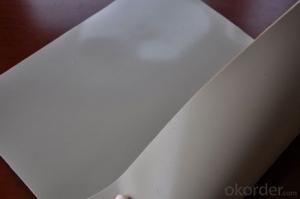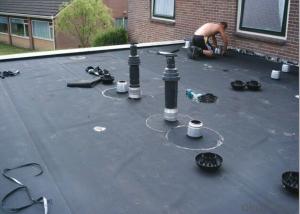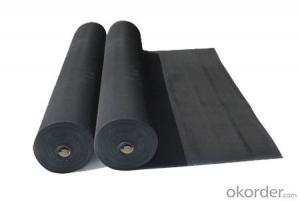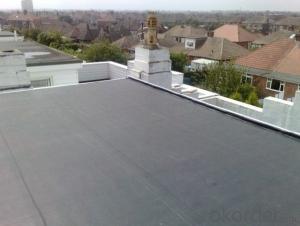Pondguard EPDM Waterproof Membrane with 2m 4m Width
- Loading Port:
- Qingdao
- Payment Terms:
- TT or LC
- Min Order Qty:
- 1000 m²
- Supply Capability:
- 100000 m²/month
OKorder Service Pledge
OKorder Financial Service
You Might Also Like
EPDM Coiled Rubber Waterproof Membrane for Ponds
Description for EPDM Rubber Waterproof Membrane :
GeoGard EPDM offers dependable performance for irrigation reservoirs, canals, aquaculture, dung pits, landfill covers,
waste water reservoirs, constructed wetlands, artificial snow reservoirs, storm water reservoirs, fire reservoirs and
large decorative ponds.
Main Features of EPDM Rubber Waterproof Membrane:
Artificial lakes
Golf course water features
Commercial decorative ponds
Residential decorative ponds
Reflection ponds
Streams, waterfalls and fountains
Swimming ponds
Natural swimming pools
Leisure park water features
Specifications of EPDM Rubber Waterproof Membrane:
Material | EPDM Rubber |
Size | 1.2m (width)*20m (length) or customized, weldable type 2.05m or 4m width |
Thick | 1.2mm, 1.5mm, 2.0mm |
Type | Vulcanized & Weldable |
Pattern | Non-reinforced (homogeneous) |
Certificate | ISO9001/14001 |
Training
The RubberGard EPDM Roofing System is exclusively installed by approved roofing contractors that have successfully completed a training program in one of training centers.EPDM Project References
Operating since 3 decades in Europe and Asia, our Products has installed hundreds of thousands of EPDM roofs. The project portfolio includes a selection of major projects.
Images of EPDM Rubber Waterproof Membrane:
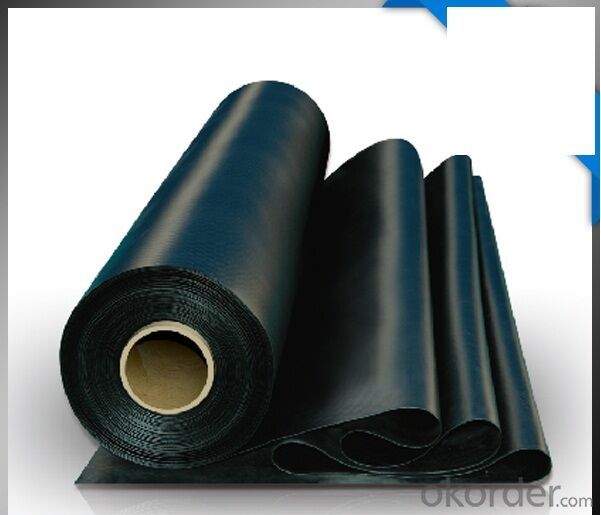
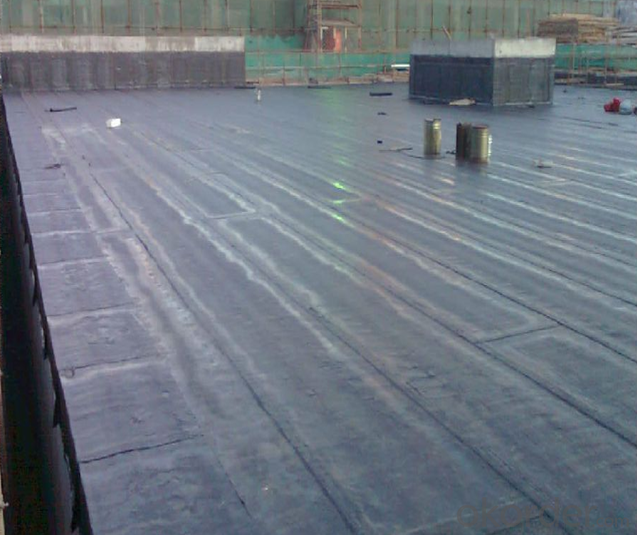
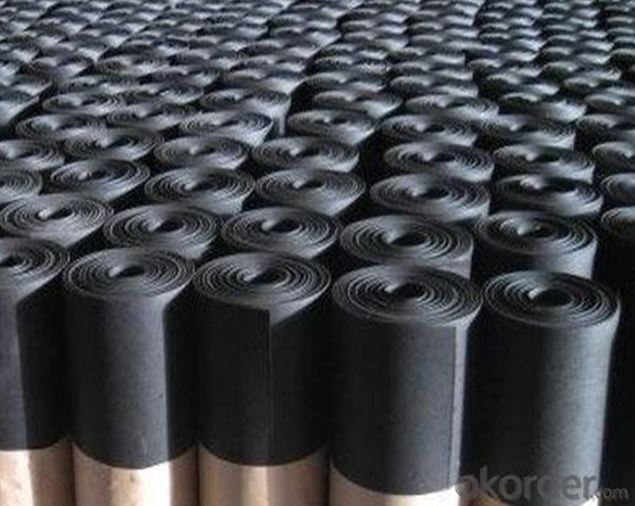
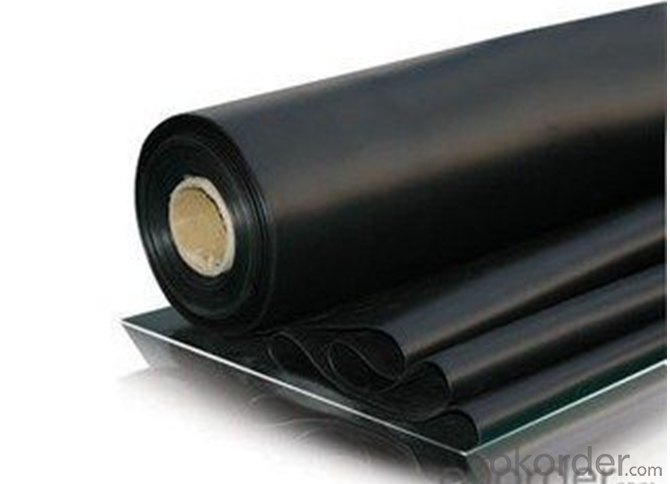
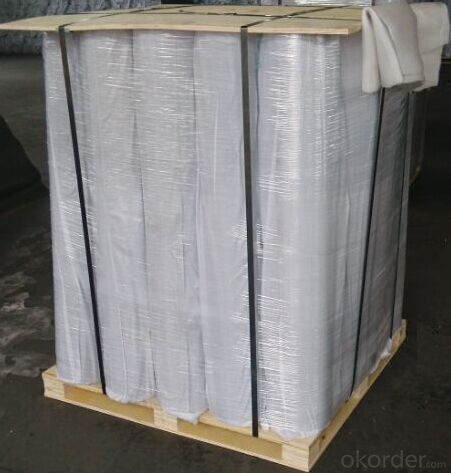
FAQ:
1. What are we supplying?
We are specialized in producing Colorful Asphalt Roof Shingle, SBS/APP modified bitumen waterproof membrane, Self adhesive bitumen waterproof membrane, PVC waterproofing membrane, EPDM rubber roofing membrane, Single Component Polyurethane Waterproof Coating, and Spray Polyurea Waterproof Coating
.
2. How Many years experience do we have?
We have been exported to more than 20 countries in the past 15 years.
3. How long do we usually reply your request?
We always reply our customer within 24 hours.
- Q: Can a waterproofing membrane be pre-fabricated or pre-made for easy installation?
- Indeed, there are pre-fabricated or pre-made waterproofing membranes available for easy installation. Many manufacturers offer these membranes specifically designed to simplify the installation process. These membranes are usually manufactured in controlled factory conditions to ensure consistent quality and reduce the potential for errors during installation. Pre-fabricated waterproofing membranes are made from different materials, such as bitumen, PVC, EPDM, or TPO, and are available in various forms, including sheets or rolls. They are designed for easy transportation and on-site installation. The use of pre-fabricated waterproofing membranes brings several advantages, including increased efficiency, reduced labor costs, and improved installation quality. Contractors can save time and resources by eliminating the need for on-site fabrication. Additionally, pre-made membranes often come with detailed installation instructions, making it easier for contractors to ensure proper installation. Furthermore, pre-fabricated waterproofing membranes can be customized to meet specific project requirements, such as size, shape, or slope. This customization ensures a seamless and effective waterproofing solution. Overall, the use of pre-fabricated or pre-made waterproofing membranes can simplify the installation process significantly and provide a reliable and durable waterproofing solution for various applications, such as roofs, basements, and foundations.
- Q: It is good for black roof with waterproof paper
- Roof waterproof selection is generally: SBS modified asphalt waterproofing membrane and self-adhesive waterproofing membrane.
- Q: Can a waterproofing membrane be used for a warehouse floor?
- Yes, a waterproofing membrane can be used for a warehouse floor. A waterproofing membrane is designed to prevent the penetration of water and other liquids, providing a protective barrier. This can be especially useful in a warehouse setting where spills and leaks are common. By applying a waterproofing membrane to the floor, it can help to prevent water damage, mold growth, and other potential issues. Additionally, a waterproofing membrane can also provide added durability and strength to the warehouse floor, helping to extend its lifespan and reduce the need for repairs or replacement. Overall, using a waterproofing membrane on a warehouse floor can be a cost-effective and efficient way to protect the space and ensure its longevity.
- Q: Can a waterproofing membrane be used on below-grade structures, such as basements?
- Basements can benefit greatly from the use of a waterproofing membrane. Installing this membrane is highly recommended to avoid water infiltration and moisture problems. Acting as a barrier, the waterproofing membrane prevents water from seeping into the basement walls and floors. It is typically made of materials like bitumen, rubberized asphalt, or polyethylene, which are designed to be impermeable to water. The membrane can be applied either on the outside or inside of the basement walls and floors, creating a tight seal that prevents water damage, mold growth, and structural issues caused by water penetration. Therefore, it is essential to use a waterproofing membrane on basements and other below-grade structures to ensure a dry and safe living or storage area.
- Q: Can a waterproofing membrane be used for green roofs?
- Yes, a waterproofing membrane can be used for green roofs. In fact, it is a crucial component of the green roof system. A green roof consists of a layer of vegetation, growing medium, and a waterproofing membrane that prevents water from seeping into the building. The waterproofing membrane acts as a barrier to protect the structure underneath from water damage. It is designed to withstand the constant exposure to moisture and ensure that water does not penetrate through to the building. Additionally, the membrane helps to retain water within the green roof system, allowing for proper drainage and irrigation. Therefore, a high-quality waterproofing membrane is essential for the successful installation and functioning of a green roof.
- Q: Can a waterproofing membrane be used in areas with heavy foot traffic or vehicle loadings?
- In high-traffic or heavy loading areas, it is possible to utilize a waterproofing membrane. Nevertheless, it is crucial to select a membrane specifically designed for such purposes in order to guarantee durability and longevity. These specialized membranes are typically thicker and more resistant to wear and tear. Furthermore, it is important to consider the type of traffic or loading that the area will endure. For instance, areas with vehicular traffic may necessitate a membrane with higher compressive strength to endure the weight of vehicles. In conclusion, the selection of the appropriate type of membrane that satisfies the specific demands of the application is of utmost importance when using waterproofing membranes in high-traffic or heavy loading areas.
- Q: Can a waterproofing membrane be used on rubber surfaces?
- Rubber surfaces, like roofs, decks, or rubber flooring, can benefit from the use of a waterproofing membrane. These membranes are designed to create a barrier that stops water from penetrating and harming the underlying surface. By applying a liquid or sheet membrane, it adheres to the rubber surface and forms a protective layer that prevents water from seeping through. This protective layer not only extends the lifespan of the rubber surface but also prevents problems like leaks or decay caused by moisture. However, it is crucial to ensure that the waterproofing membrane is compatible with the specific type of rubber surface being treated. Some membranes may not adhere properly or may cause damage to certain types of rubber. To guarantee proper application and compatibility, it is always recommended to consult with a professional or the manufacturer of the waterproofing membrane.
- Q: Can waterproofing membranes be used on buried pipelines?
- Yes, waterproofing membranes can be used on buried pipelines. These membranes create a barrier that prevents water from infiltrating the pipeline, protecting it from corrosion and other forms of damage.
- Q: Can a waterproofing membrane be used on gypsum block surfaces?
- Yes, a waterproofing membrane can be used on gypsum block surfaces. Gypsum blocks are porous materials that can absorb moisture and are not naturally waterproof. Applying a waterproofing membrane can help to prevent water infiltration, moisture damage, and mold growth on the gypsum block surfaces. It creates a barrier that repels water and prevents it from seeping into the material. However, it is important to ensure that the waterproofing membrane is suitable for use on gypsum blocks and is compatible with the specific type of gypsum block being treated. Additionally, proper surface preparation and application techniques should be followed to ensure the effectiveness and longevity of the waterproofing membrane.
- Q: Can waterproofing membranes be used on concrete reservoirs?
- Yes, waterproofing membranes can be used on concrete reservoirs. Waterproofing membranes are designed to provide a protective barrier against moisture and water penetration, making them an ideal choice for concrete reservoirs that need to be watertight. These membranes are typically applied to the concrete surface, creating a seamless and durable waterproof layer. They can effectively prevent water leakage, seepage, and dampness, ensuring the integrity and longevity of the concrete reservoir. Additionally, waterproofing membranes can also provide resistance against chemicals, UV rays, and other environmental factors, further enhancing the durability and performance of the concrete reservoir. It is important to choose a high-quality waterproofing membrane that is specifically designed for use on concrete structures and to follow the manufacturer's instructions for proper application and maintenance.
Send your message to us
Pondguard EPDM Waterproof Membrane with 2m 4m Width
- Loading Port:
- Qingdao
- Payment Terms:
- TT or LC
- Min Order Qty:
- 1000 m²
- Supply Capability:
- 100000 m²/month
OKorder Service Pledge
OKorder Financial Service
Similar products
Hot products
Hot Searches
Related keywords
